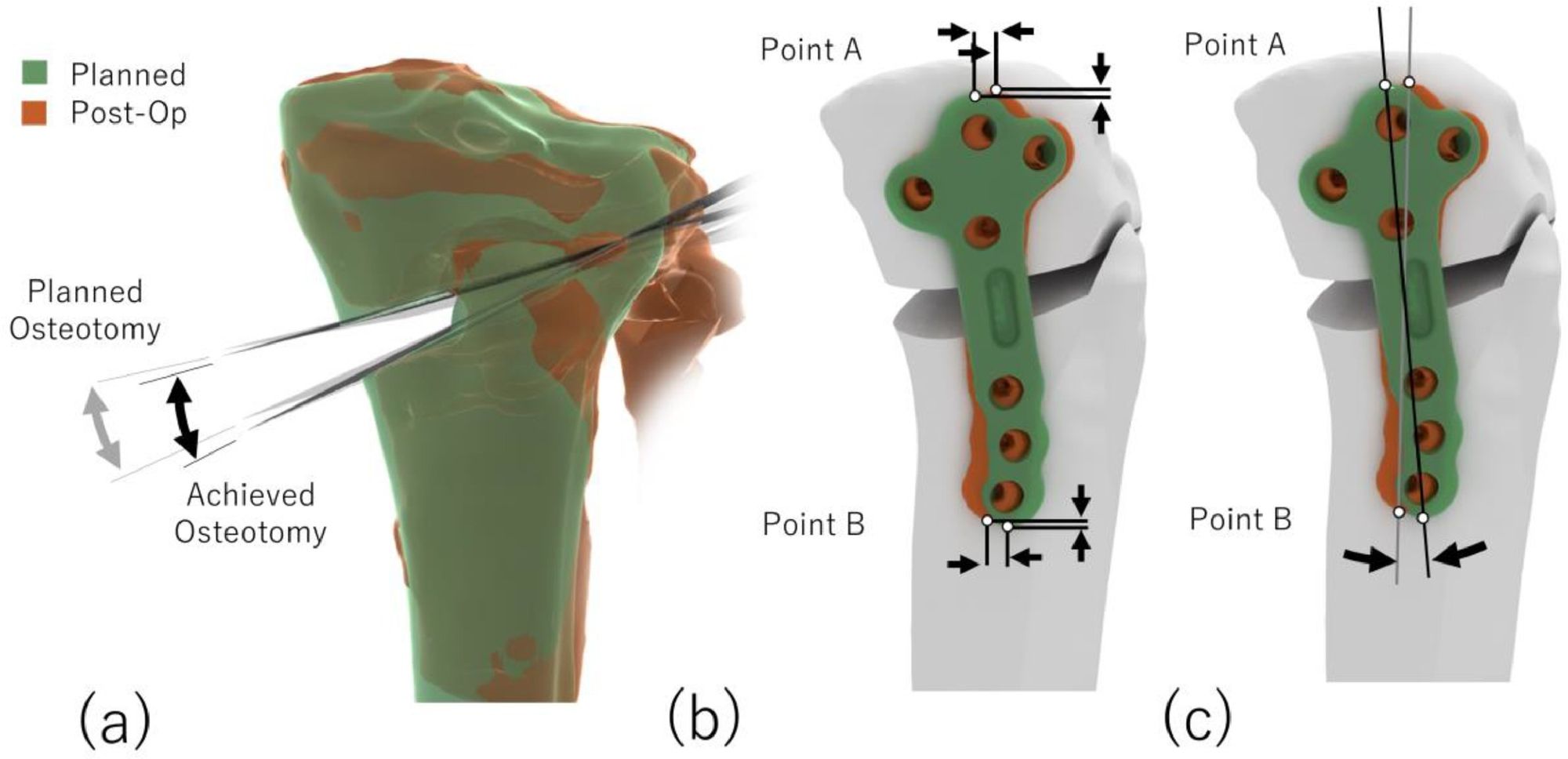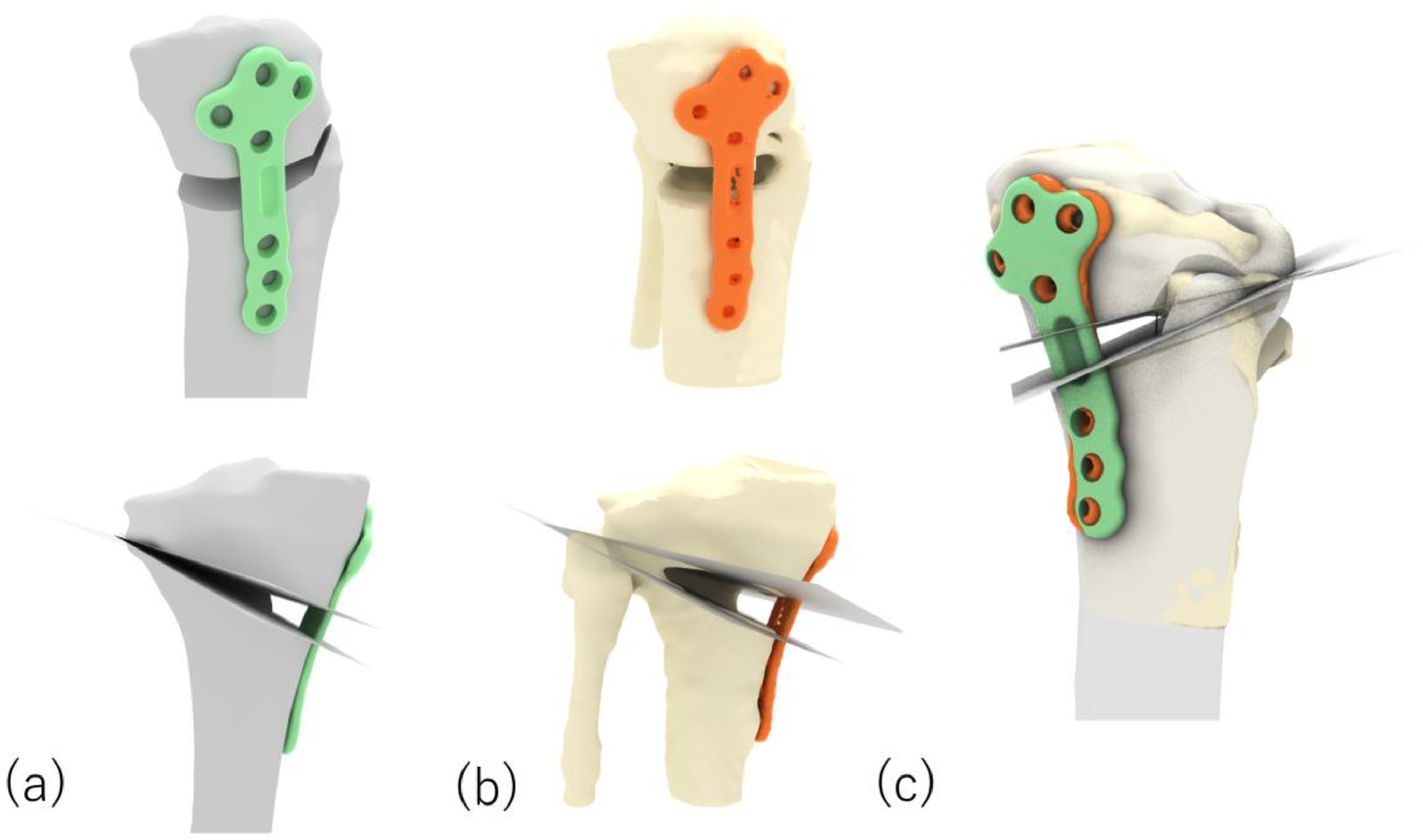Published in the Medical Engineering & Physics Journal
Summary of the study
This study evaluated the accuracy of a novel High Tibial Osteotomy (HTO) system using 3D printed patient-specific implants and surgical guides on cadaveric specimens.
A 3D evaluation of pre- versus post-surgery anatomy was demonstrated using CT scans, and the study found that the novel HTO surgery reliably achieves planned correction angles with a high level of accuracy. The study found that the average discrepancy between the pre-operative plan and the post-operative osteotomy correction angle was 0.0 ± 0.2°.
The use of custom surgical guides was shown to improve accuracy and reliability for leg re-alignment. Overall, the study suggests that this novel HTO surgery has the potential to improve the accuracy of osteotomy correction angles achieved surgically.

Abstract
High tibial osteotomy (HTO) is an effective surgical treatment for isolated medial compartment knee osteoarthritis; however, widespread adoption is limited due to difficulty in achieving the planned correction, and patient dissatisfaction due to soft tissue irritation. The aim of this study was to assess the accuracy of a novel HTO system with 3D printed patient specific implants and surgical guides using cadaveric specimens.
Local ethics committee approval was obtained. The novel opening wedge HTO procedure was performed on eight cadaver leg specimens. Whole lower limb CT scans pre- and post-operatively provided geometrical assessment quantifying the discrepancy between pre-planned and post-operative measurements for key variables: the gap opening angle and the patient specific surgical instrumentation positioning.
The average discrepancy between the pre-operative plan and the post-operative osteotomy correction angle was: 0.0 ± 0.2°. The R2 value for the regression correlation was 0.95.
The average error in implant positioning was -0.4 ± 4.3 mm, -2.6 ± 3.4 mm and 3.1 ± 1.7° vertically, horizontally, and rotationally respectively.

This novel HTO surgery has greater accuracy in correction angle achieved compared to that reported for conventional or other patient specific methods with published data available. This system could potentially improve the accuracy of osteotomy correction angles achieved surgically.

